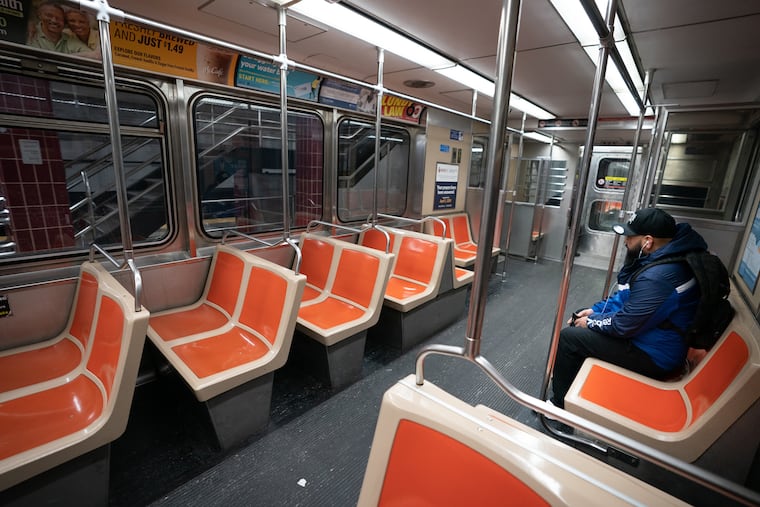Let America build again
The city used to have — and execute — grand plans for new systems. Now we just tinker at the edges.

Philadelphia once was a place where the director of its transit department proposed a massive expansion of the city’s public transit system and got much of it done within a few years.
If that sounds unreasonably optimistic, keep in mind that the mayor at the time was Rudolph Blankenburg and the year was 1913. In an age that looks backward in many ways to modern eyes, a forward-looking proposal not only seemed possible but was partly accomplished in a reasonable amount of time. Construction began on the Broad Street Line in 1924, and it opened to riders in 1928.
Not everything the city’s first transit director, A. Merritt Taylor, called for was built — the Great Depression killed many of the outer edges of the system — but much of it was. There have been expansions since then — most notably the 1973 Broad Street Line extension to Pattison Avenue — but the subway and El train you ride today go to basically the same places they went nearly a century ago.
» READ MORE: Philadelphians have waited over a century for the Roosevelt Boulevard subway | Opinion
Times have changed since 1913
People have options besides trains, and the railroads’ monopoly on travel is forever broken. But those changes do not explain the shift in thinking on transit projects, or on government projects more generally. We have moved from grand plans for new systems to tinkering at the edges. We don’t dream big anymore.
If you ask why standards of living have grown but people still feel like we are treading water as a nation, this is it: The country no longer believes in itself. SEPTA is now “reimagining Regional Rail,” but the result will likely be a long consultative process that changes little. A real reimagining would not only run more trains more often but also run them to more places.
The idea of a Roosevelt Boulevard subway — first mentioned in Taylor’s 1913 report — still comes up now and again. But instead of a big permanent investment that would speed riders to Center City in 20 or 30 minutes, we get a bus that makes fewer stops.
Ask SEPTA or the city why this is the case and the answer inevitably will be about money. They’re not completely wrong. Taylor’s 1913 estimate of building a line to Rising Sun Avenue and the Boulevard was $1.56 million. We know that costs have undergone significant inflation since then, but according to the Bureau of Labor Statistics’ inflation calculator, that still only equals about $46 million today. But as Philadelphia Magazine’s Sandy Smith noted in his article on the Boulevard subway, a 2007 study suggested the cost today would be more than $4 billion.
“A real reimagining would not only run more trains more often but also run them to more places.”
Of course, much of the Northeast was farmland in 1913, which might have made construction easier. But the cost of the entire citywide system Taylor proposed back then would only equal $1.7 billion in 2022 dollars.
Why the change?
The main problem is that we pay far more for construction than we used to. Part of this is inevitable: Making workplaces safer and paying prevailing wages means higher costs. But the extent to which those costs have grown in America is out of balance and out of pace with most of the rest of the developed world. A 2021 Vox report attributed this disparity to several causes, including bureaucracy and the frequent interruptions to the building process. A New York Times investigation into that state’s inflated subway costs in 2017 found overstaffing to have also contributed to its highest-in-the-world costs per mile. But government overspending on the people (and companies) building things means that the projects get so expensive, no one even bothers building them. That helps no one.
Beyond money, we also build things more slowly, despite advances in technology. We did this to ourselves. As a response to the rapid and destructive growth of highways through neighborhoods (usually poor ones) in the 1950s, Congress passed the National Environmental Policy Act in 1970. More consultation before bulldozing a community is a good thing, but the act’s excessive consultation rules require yearslong processes even for transit projects that will not infringe one single piece of private property.
SEPTA has been planning a four-and-a-half-mile extension of the Norristown High Speed Line to King of Prussia since 2013; nine years later, it has not laid a single foot of rail. It’s not the agency’s fault. Federal laws force everything to move at a snail’s pace.
We impose cost and time constraints on ourselves as a nation, then when confronted with them, give up. There have been tremendous advances in technology in the past 50 years, but nothing as grand as the Hoover Dam, the interstate highway system, or even a single new subway line in the nation’s sixth-largest city.
Well-meaning restrictions and prevailing wage laws have resulted in a deepening sclerosis in government, a condition that spreads to society at large. What seemed simple to build in 1913 looks impossible in 2022. Recapturing the optimism of an older America means cutting back on regulations from Washington, but also believing in ourselves. Our country can do great things again, if we can just get out of our own way.
Kyle Sammin is editor-at-large at Broad + Liberty.